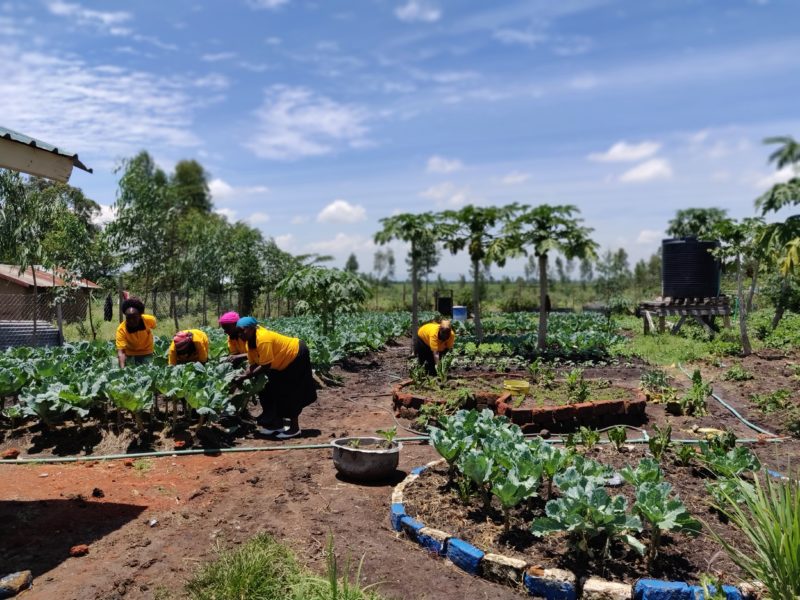We walk towards the 23 garden plots bursting with kale, tomatoes, potatoes, beans, and a smattering of butternut squash. Seven women, all affected by AIDS, work this land three days a week, giving them time to be mothers and grandmothers. Proudly wearing bright yellow shirts that say GARDEN PROJECT on their back, they mulch, water, weed, prepare new land, sow, plant, harvest. I strike up a conversation with two women and ask what the project means to them and they explain that they and the children eat from the money earned. That their children are in school. That their household has seen improvements. I ask if they are paid in shillings or in vegetables and they smile, saying that their pay is in cash, daily, at the end of the workday. They do not receive vegetables from these gardens for free, as their wages are good. Instead, they can purchase any food they want, whether at market or here. Like many community members, they opt to buy veggies from here, placing orders that are fulfilled throughout the day. Any vegetables needed by the small orphanage AFCA supports in this community are given freely from these gardens. Children there now eat balanced meals, complete with green, white, yellow, red, and orange veggies and fruit. What a change that is from the usual beans and ugali they normally ate!
With the goal of 50 plots of gardens, I ask Grace, the head gardener, to give me a list of what she would like to grow here, to dream a little. No one has asked her that before, and she smiles as she pounds garlic, ginger and onions into a natural pesticide. Amazing smells waft up from her mortar and pestle, and I wonder why bugs don’t like this mix she is making while all I want to do is fry it up and add it to some beans and rice. She promises me an answer by tomorrow, after she’s had time to think things through. Cleaning her hands on her apron, she goes through record books with me, impressing me with her eye for detail. She is a willing learner and we address some changes that will make the record-keeping a bit more complete and she promises to add the extra two columns we think will make reports better.


